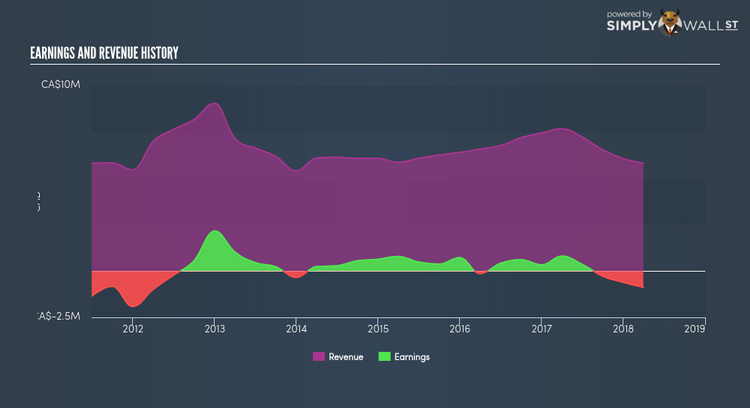Route1 Inc (CVE:ROI): What Does It Mean For Your Portfolio?

If you are looking to invest in Route1 Inc’s (TSXV:ROI), or currently own the stock, then you need to understand its beta in order to understand how it can affect the risk of your portfolio. The beta measures ROI’s exposure to the wider market risk, which reflects changes in economic and political factors. Different characteristics of a stock expose it to various levels of market risk, and the market as a whole represents a beta of one. Any stock with a beta of greater than one is considered more volatile than the market, and those with a beta less than one is generally less volatile.
See our latest analysis for Route1
What is ROI’s market risk?
With a beta of 1.21, Route1 is a stock that tends to experience more gains than the market during a growth phase and also a bigger reduction in value compared to the market during a broad downturn. According to this value of beta, ROI may be a stock for investors with a portfolio mainly made up of low-beta stocks. This is because during times of bullish sentiment, you can reap more of the upside with high-beta stocks compared to muted movements of low-beta holdings.
How does ROI’s size and industry impact its risk?
A market capitalisation of CA$13.03M puts ROI in the category of small-cap stocks, which tends to possess higher beta than larger companies. Moreover, ROI’s industry, software, is considered to be cyclical, which means it is more volatile than the market over the economic cycle. As a result, we should expect higher beta for small-cap stocks in a cyclical industry compared to larger stocks in a defensive industry. This supports our interpretation of ROI’s beta value discussed above. Fundamental factors can also drive the cyclicality of the stock, which we will take a look at next.
How ROI’s assets could affect its beta
An asset-heavy company tends to have a higher beta because the risk associated with running fixed assets during a downturn is highly expensive. I examine ROI’s ratio of fixed assets to total assets to see whether the company is highly exposed to the risk of this type of constraint. Given a fixed to total assets ratio of over 30%, ROI seems to be a company which invests a big chunk of its capital on assets that cannot be scaled down on short-notice. Thus, we can expect ROI to be more volatile in the face of market movements, relative to its peers of similar size but with a lower proportion of fixed assets on their books. This is consistent with is current beta value which also indicates high volatility.
What this means for you:
You could benefit from higher returns from ROI during times of economic growth. Its higher fixed cost isn’t a major concern given margins are covered with high consumer demand. Though, in times of a downturn, it may be safe to look at a more defensive stock which can cushion the impact of lower demand. What I have not mentioned in my article here are important company-specific fundamentals such as Route1’s financial health and performance track record. I highly recommend you to complete your research by taking a look at the following:
Financial Health: Is ROI’s operations financially sustainable? Balance sheets can be hard to analyze, which is why we’ve done it for you. Check out our financial health checks here.
Past Track Record: Has ROI been consistently performing well irrespective of the ups and downs in the market? Go into more detail in the past performance analysis and take a look at the free visual representations of ROI’s historicals for more clarity.
Other High-Performing Stocks: Are there other stocks that provide better prospects with proven track records? Explore our free list of these great stocks here.
To help readers see pass the short term volatility of the financial market, we aim to bring you a long-term focused research analysis purely driven by fundamental data. Note that our analysis does not factor in the latest price sensitive company announcements.
The author is an independent contributor and at the time of publication had no position in the stocks mentioned.

 Yahoo Finance
Yahoo Finance 
